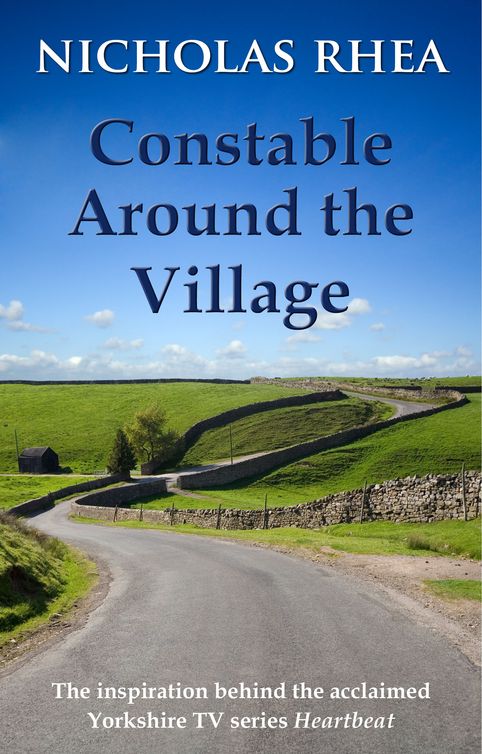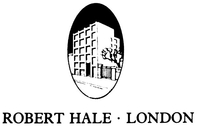Constable Around the Village
Read Constable Around the Village Online
Authors: Nicholas Rhea


THE VILLAGE
Nicholas Rhea


“Ill customs influence my very senses.”
Sir George Etherege, 1635–1691
Somewhere across the map of North Yorkshire there lies an invisible line which separates the north of that county from the south. People in counties Durham and Cleveland will accept a north North Yorkshireman as a northerner, but those unfortunates who live in the southern regions of North Yorkshire, in the soft warmth and built-up
wilderness
of cities like York and Ripon and boroughs like
Scarborough
and Harrogate, are considered southerners.
In every northerner’s eyes, a southerner is suspect. There is something not quite right about them. If that southerner happens to qualify only because he lives in the southern part of North Yorkshire, then that makes no difference. Anyone unenlightened enough to live south of that unseen line is indeed a person to be pitied, more so if he happens to live in a town.
Pity
is perhaps not the right word;
tolerance
is not totally apt and neither is
deplore.
A feeling of despair may not be absolutely accurate, nor is excruciation, agony, passion, or anxiety.
If there is difficulty in finding a word suitable to describe that feeling, the north North Yorkshireman will come to the rescue by saying, “Ah can’t abide southerners.” Having said that, he knows what he means. He can’t abide them; there’s a lot that a Yorkshireman can’t abide, but, as a group, southerners are definitely the least abideable of anyone.
The snag is that the all-important, but invisible line is very difficult to define or determine. No one is quite sure where it lies, least of all the self-appointed northerners.
In my capacity as the village constable at Aidensfield, I lived somewhere on that line. I appreciated that fact when I was posted there; having been reared
in
a
genuine
northern district, the moorlands of the North Riding of Yorkshire, I had been brought up in the knowledge that the area around Aidensfield was definitely “south”. Even though the outer limits of Aidensfield beat encompassed the southern edges of the North Yorkshire moors and lay well within the North Riding’s administrative area, the village was definitely “south” in the eyes of many.
Once I moved into Aidensfield, however, I did not
consider
it “south”. In my view, it was north because the folks who lived there spoke the same language as my ancestors and adopted the same hard-headed attitude. In fact, the villagers considered themselves “north”; in their view, southerners lived at York or beyond and occupied those indeterminable areas of suburbia between there and London, which was a biggish town located at the bottom end of the Great North Road.
Having been nurtured as a northerner, finding myself working in what they consider a southern district was
disconcerting
. Even so, I was confident that Aidensfield really was “north”. But who could decide the issue? There had to be some definitive method of settling the matter.
Somewhere
, somehow, there had to be a rule which clearly and permanently categorised North Yorkshiremen. Perhaps a road, a river or a parish boundary or two? By chance I stumbled upon the answer. It lay in the ancient custom of First Footing, a matter in which I, as the local constable, soon found myself deeply involved.
First Footing of the genuine kind does not take place in the south. That is a golden rule. Worse still, in some southern areas the people attempt to copy the custom by doing it on Christmas Day! That is sheer impudence. First Footing is purely a northern custom and, because the villagers of Aidensfield and district take part in the custom, they must be northerners. In those days the people of York didn’t genuinely First Foot while those in the West Riding, at centres like Leeds and Bradford, certainly did not. Further away in the deep, deep south of Yorkshire, at
Sheffield
,
(which is halfway to London), the matter was not even considered. Down there, they thought First Footing was a building term. But Aidensfield did First Foot. That classified it as north and that made me happy. It meant I had not trespassed beyond the bounds of true northern
credibility
by emigrating into unknown southern regions and, even if my old colleagues continued to categorise
Aidensfield
as south, I knew it wasn’t. That the custom of First Footing occurred in Aidensfield assured me it was a northern village and for that I was eternally thankful. For a northerner to be mistaken for a southerner was akin to a Catholic being mistaken for a Holy Roller.
First Footing is a very ancient and noble custom. It is practised with alacrity on New Year’s Eve and its misty origins matter very little to those who enjoy it in our modern society. Nonetheless, there are certain rules which must be obeyed.
First and foremost, it is a New Year ceremony, the
purpose
of which is to bring good luck and prosperity to the household. The method of First Footing is very simple, albeit undertaken within the accepted but unwritten code of conduct.
The term means “first into the house”. A First Foot is therefore the very first visitor to a house in the New Year. He must arrive as soon as possible after midnight on New Year’s morning and he must bring with him certain gifts which symbolise a lasting supply of food, warmth and
prosperity.
These items are fairly simple—there must be a piece of coal to symbolise heat and light, a coin to symbolise continuing wealth or perhaps a little salt in lieu, and a piece of bread to fulfil the food requirement. In Aidensfield and some other areas of North Yorkshire, a piece of holly must also be carried, this evergreen being an ancient symbol of everlasting life.
In addition to the required gifts, the First Foot must also comply with certain personal rules. He must always be a man. Women must never perform this task, otherwise it brings bad luck, and the Sex Discrimination Act has not yet been amended to change this rule. In order to qualify, a man must never be flat-footed or cross-eyed, and his eyebrows
must not meet across the nose. In addition, he should have dark hair. In the ideal situation, he should be a total stranger who chances to enter one’s house at the right time, but, as honest midnight visitors of this sex are rare and indeed open to close police interest, most northerners make do with someone they know, provided he is suitably qualified.
To ensure that each household is visited at the necessary time, plans are made well in advance. The selected First Footer is approached and asked if he will execute this noblest of deeds for the everlasting benefit of the household in question. Invariably, he says he will be happy to oblige. Thus committed, he must equip himself with sufficient bread, money or salt, coal and holly, for each house upon his itinerary and he will be expected to kiss every lady encountered
en
route.
The selection of a suitable First Footer, or Lucky Bird as he is often known, is therefore a matter of some importance. Tall, dark men are in demand as careful plans are laid. As zero hour approaches, the doors are locked until the arrival of the First Foot. It would be disastrous if someone else entered to ruin the luck of the coming year.
It ought to be said at this stage that there is another seasonal custom in the north. This also takes place over New Year’s Eve and well into the early hours of New Year’s Day, and it is known as Boozing Late. All the pubs and clubs work hard to cater for massive thirsts and seasonal
celebrations
and it is fair to say that a high proportion of the indigenous population inhabit these places as the Old Year changes into the New. Much singing and high-spirited jollification takes place and a great deal of last-minute First Footing is arranged at these celebratory gatherings.
It follows, therefore, that the role of the country constable is somewhat unspecific over those midnight hours. The pubs make brave attempts to comply with the law by seeking permission from Their Worships to open late. This is seldom refused, if only because Their Worships also enjoy the occasion, and the customers play their part by never drinking away from their home village at New Year. Thus they are all “friends of the licensee” which means they drink later than normal and this also obviates the
constable’s
worries about drunks navigating ungovernable vehicles about the place. Everyone walks, or tries to. Another feature of this arrangement is that, by walking, one can call at many houses
en
route,
ostensibly to check that the First Foot has performed his annual ritual. If he hasn’t, entry is refused; if he has, everyone is welcome to take cheese and gingerbread, laced with ginger wine.
On my very first New Year’s Eve at Aidensfield, therefore, I found myself on duty and having to perform half nights. It was a shift beginning at 6 pm on New Year’s Eve and ending at 2 am on New Year’s Day. This fact registered itself with horror on my mind, but as the newest newcomer to
Ashfordly
section it was my lot to be allocated this duty. It meant I would have to patrol my beat for eight miserable hours while everyone else was welcoming the New Year in the traditional northern manner.
The pubs would be full of merry-making and the houses noisy with parties. The streets would be deserted, at least for the final throes of the Old Year. My role would be to enforce the law that night, to patrol my wide-ranging beat on a cold, noisy motor-cycle and to return home in the early hours of New Year’s Day frozen to the core and reeling at the absence of pure enjoyment. It threatened to be a miserable time.
But the general public had other ideas. Because I was almost six feet tall with dark hair and eyebrows that did not meet in the middle, plus the fact that I was, in truth, a stranger to the district and a person of the male sex to boot, I was deemed eminently suited for the role of a First Footer. Little did I realise, as I embarked on my evening patrol shortly after six o’clock, that my New Year’s Eve would be both memorable and enjoyable.
As I began that final Old Year tour of duty, I made a mental note to First Foot at my own house on New Year’s Day. I would be my own First Footer at two o’clock that morning. If all else failed, I would achieve that honour. But as I chugged into Aidensfield, parked my motor-cycle and embarked upon a foot patrol to the pillar-box a lady hailed me.
She was middle-aged with greying hair and wore a
flowered apron about her ample body. It transpired she had spotted me marching past her tiny cottage and had rushed to the door to call me. In the blackness of that early evening, I must have looked horrifying in my crash-helmet, goggles and motor-cycle gear, but it did not frustrate this
determined
woman.
“Mr Rhea, Mr Rhea,” she called. “Have you a moment?”
I halted, turned and beamed at her from beneath my heavy clothing.
“Hello, Mrs Mitchell.”
“I’m glad I caught you.” She was panting slightly. “I wonder if I might ask you a favour?”
“Go ahead,” I invited, wondering what lay in store.
“Tonight,” she smiled. “It’s New Year’s Eve and I haven’t a First Footer.”
“Do you want me to find one?” I asked, innocently.
“Well, no, not exactly.” She didn’t lose her smile. “I thought you might do it for me.”
“Oh.” I must have sounded surprised, then realised I was being paid a compliment. “Well, yes, I will. I’m sure I can manage that.”
“At midnight,” she told me. “You must come at
midnight
, or as soon as you can afterwards.”
“Let me see.” I made a mental calculation of the
conference
points I had to make. I had one at eleven-thirty at Elsinby and my next was twelve-fifteen at Aidensfield.
“Yes, I can be there,” I offered. “I’ll do your First
Footing
.”
“You’ll need a piece of coal, some holly, money and bread,” she said seriously. “I’ll get them for you.”
And with no more ado Mrs Mitchell returned to her home and moments later reappeared with the necessary items. I opened one of the panniers on the motor-cycle and popped in the coal and holly. I slid the £.s.d. penny and slice of bread into my overcoat pocket.
“Midnight,” she said, “not before.”
“I’ll be there,” I assured her.
Having settled that little issue, I completed my journey to the pillar-box, popped in a birthday card I had to post and began the return trip to my motor-cycle. As I did so, I
reflected briefly on the honour she had bestowed upon me. I felt this request had come to me because of my
comparatively
recent arrival in the village, but at the same time it showed that I was accepted. It proved I was allowed into the homes of the people otherwise than in the course of my duty. I was part of the life of the community. That’s how I interpreted this request and it pleased me.
Within the next three hours, I was approached by seven further villagers, all wanting me to be their First Footer. I was given lumps of coal which filled one pannier while sprigs of holly were pushed unceremoniously into the other. I had a coat pocket full of sliced bread wrapped in greaseproof paper and lots of coins jangling about my uniform. The situation had now arrived whereby I had to make notes about the precise timing of my First Footing activities.
Mrs Mitchell could be accommodated just after midnight, for I would then have returned from Elsinby in readiness for my twelve-fifteen point at Aidensfield telephone kiosk. This was no problem. I had also to remember that Sergeant Blaketon was on duty tonight and he was quite likely to pay me a call, so I didn’t dare miss any of my rendezvous points. So it was to be Mrs Mitchell at midnight, Stan Williams at ten past, my point at quarter past, Mr and Mrs Collins at twenty-five past, Mrs Collins’s mother next door at
half-past
, the elderly Misses Bush and Rowe at quarter to one, Alan and Sue Bentley at one o’clock and the Leech family at quarter past one. I would make my one-thirty point at Thackerston and that would get me home at two o’clock, there to perform my final and most important First Foot duty. My night of threatened misery had taken a turn for the better and time would fly.